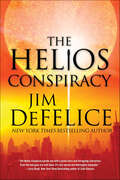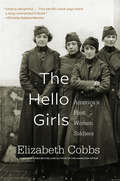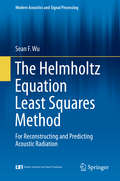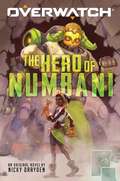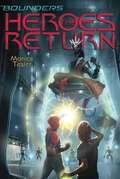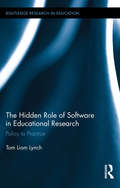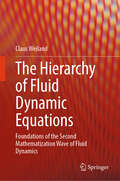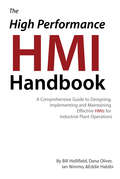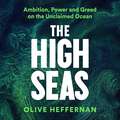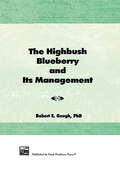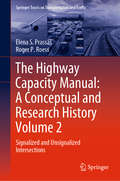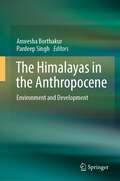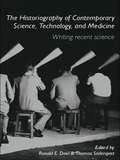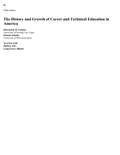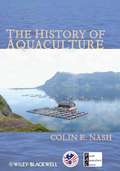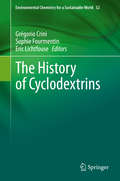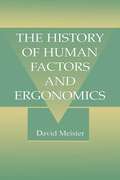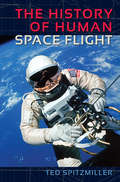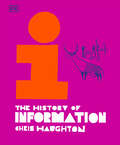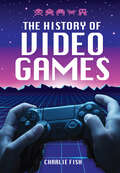- Table View
- List View
The Helios Conspiracy
by Jim DeFeliceRogue FBI agent Andy Fisher is visiting New York City for the first time after saving it from a terrorist attack when he discovers that the only woman he has ever loved has been murdered. Armed with a fresh cup of joe and his characteristic disdain for authority, Fisher disobeys orders and begins investigating. His former lover was a key employee of Icarus Sun Works. Her death threatens to delay plans to launch a satellite to harvest solar energy and beam it to earth as electricity. When perfected, the technology will power entire cities for literally pennies. And the energy will be clean: no more BP disasters, no more Fukushima catastrophes. When the rocket carrying the satellite into space mysteriously explodes, Fisher learns that the sabotage is only the start of a complicated Chinese government campaign to thwart the project and steal the technology. After falling in love with the woman who designed the rocket, the irascible and over-caffeinated FBI agent must find a way to save her from assassination—and protect the satellite system from a wide-ranging conspiracy that will stop at nothing to destroy it. New York Times bestselling author Jim DeFelice delivers a gripping thriller inspired by real-life advances in clean energy technology in The Helios Conspiracy.At the Publisher's request, this title is being sold without Digital Rights Management Software (DRM) applied.
The Hello Girls: America's First Women Soldiers
by Elizabeth CobbsIn 1918 the U.S. Army Signal Corps sent 223 women to France to help win World War I. Elizabeth Cobbs reveals the challenges these patriotic young women faced in a war zone where male soldiers resented, wooed, mocked, saluted, and ultimately celebrated them. Back on the home front, they fought the army for veterans’ benefits and medals, and won.
The Helmholtz Equation Least Squares Method
by Sean F. WuThis book represents the HELS (Helmholtz equation least squares) theory and its applications for visualizing acoustic radiation from an arbitrarily shaped vibrating structure in free or confined space. yIt culminates the most updated research work of the author and his graduate students since 1997. yThe book contains six chapters. yThe first serves as a review of the fundamentals in acoustics and the rest cover five specific topics on the HELS theory. "
The Hero of Numbani (Overwatch)
by Nicky DraydenEfi has been making robots since she was little. But after she witnesses Doomfists catastrophic attack on the citys OR15 security bots, Efi feels the call to build something greater: a true guardian of Numbani. She engineers an intelligent and compassionate robot, Orisa, who has a lot to learn before she's ready to defeat Doomfist.
The Heroes Return (Bounders #4)
by Monica TeslerJasper and Mira must escape the Rift and deliver the Youli’s message to Earth Force before it’s too late in this action-packed fourth novel in what Shannon Messenger calls the “richly detailed, highly imaginative” Bounders series!After escaping the Youli’s attack on Alkalinia, Jasper and Mira find themselves trapped with the lost aeronauts in the rift, a rip in space where time moves differently. For every minute they spend in the rift, they are losing days back home. Just when Jasper fears they’ll be stuck in limbo forever, the most unlikely ally shows up: the Youli. The Youli promise to rescue everyone in the rift, but their help comes at a price. First, Jasper must tell Earth Force that the Youli want peace. And second, Mira can’t return with Jasper. She has to leave with the Youli. Back home, almost a year has passed. The Youli war is public, Bounders are in space full-time, and Jasper’s pod is divided. Cole and Lucy have been promoted. Marco and Addy are missing. Jasper delivers the Youli’s message, but the admiral isn’t interested in peace talks. Instead, she sends Jasper and the aeronauts on a publicity tour of Earth to build support for the war. At first, Jasper revels in the spotlight. But it soon becomes clear that if Jasper doesn’t convince Earth Force to stop fighting—and soon—there won’t be an Earth left to fight for, and he may never see Mira again.
The Hidden History of Code-Breaking: The Secret World of Cyphers, Uncrackable Codes, and Elusive Encryptions
by Sinclair McKayA fascinating exploration of the uncrackable codes and secret cyphers that helped win wars, spark revolutions and change the faces of nations.There have been secret codes since before the Old Testament, and there were secret codes in the Old Testament, too. Almost as soon as writing was invented, so too were the devious means to hide messages and keep them under the wraps of secrecy. In The Hidden History of Code Breaking, Sinclair McKay explores these uncrackable codes, secret ciphers, and hidden messages from across time to tell a new history of a secret world. From the temples of Ancient Greece to the court of Elizabeth I; from antique manuscripts whose codes might hold prophecies of doom to the modern realm of quantum mechanics, we will see how a few concealed words could help to win wars, spark revolutions and even change the faces of great nations. Here is the complete guide to the hidden world of codebreaking, with opportunities for you to see if you could have cracked some of the trickiest puzzles and lip-chewing codes ever created.
The Hidden Role of Software in Educational Research: Policy to Practice (Routledge Research in Education #143)
by Tom Liam LynchEducational research often discounts the uniqueness and ubiquity of software and the hidden political, economic and epistemological ways it impacts teaching and learning in K-12 settings. Drawing on theories and methodologies from English education, critical discourse analysis, multimodal semiotics and digital humanities, this volume exposes the problems of technology in schools and refocuses the conversation on software. This shifting of focus invites more nuanced questions concerning the role of software in school reform and classroom instruction, and takes a critical stance on software’s role in education. This volume explores the ontology of software and the ways it is construed within educational policy discussions. It is beneficial to schools, companies, policy makers and practitioners seeking a more theoretical framework for technology in education.
The Hierarchy of Fluid Dynamic Equations: Foundations of the Second Mathematization Wave of Fluid Dynamics
by Claus WeilandThis book is devoted to the most general governing equations of the fluid mechanics, namely the Navier-Stokes equations and their derivatives. These equations are presented in various manners: for several coordinate systems, for laminar and turbulent flows, for different thermodynamic states of gases, in dimensional and non-dimensional forms, and in an incompressible situation. All that is valid also for the different versions of the Navier-Stokes equations, where appropriate. The only way to solve the fluid dynamic equations for complex three-dimensional problems consists in the use of numerical integration methods. To deal with this request it is very helpful to formulate the complete set of governing equations in vector or vector-matrix form. This is true also for two equations turbulence models as well as for the description of non-equilibrium effects of thermodynamics. These requirements are fully addressed in this book. Graduate and doctoral students, who are concerned with the numerical solutions of the fluid dynamic equations for specific problems, may find in this book the suggestions regarding the degree of approximation which could be adequate for the task they consider. Further, persons who are interested in the evolution of the mathematical description of fluid dynamic issues, both from the scientific and also the historical side, may discover suggestions, advices and motivations in this book.
The High Performance HMI Handbook: A Comprehensive Guide to Designing, Implementing and Maintaining Effective HMIs for Industrial Plant Operations
by Bill Hollifield Eddie Habibi Ian Nimmo Dana Oliver Kevyn RennerFor almost thirty years, industrial processes have been controlled by people looking at computer screens. The displays used should provide the operator with accurate information, as well as assist in both normal plant operation and the handling of abnormal situations. This goal is rarely achieved. In fact, poor Human-Machine Interfaces (HMIs) have been identified several times as contributing factors to major industrial accidents. Many of the paradigms commonly used in industrial display design yield far from optimum results.This goal is rarely achieved. In fact, poor Human-Machine Interfaces (HMIs) have been identified several times as contributing factors to major industrial accidents. Many of the paradigms commonly used in industrial display design yield far from optimum results. There has never been a comprehensive and detailed reference work covering the proper design of process control displays - until now. The High Performance HMI Handbook provides the background, the principles, and the detailed best practices for display design. The HMI is the tool by which modern processes are operated. Without proper HMI design, safe and profitable operations are much less likely. The High Performance HMI Handbook is highly relevant to any organization concerned with industrial operations, automation, safety, and reliability. The proper principles are now in one place and available to all.
The High Seas: Ambition, Power and Greed on the Unclaimed Ocean
by Olive Heffernan'A vital, fascinating, deeply researched exploration of Earth's last wilderness...Shocking and starkly illuminating - a must-read.' Gaia VinceThe ocean covers seventy per cent of the surface of our planet, and two thirds of this lie beyond national borders. Owned by all nations and no nation simultaneously, these waters are home to some of the richest and most biodiverse environments on the planet. But they are also home to exploitation on a scale that few of us can imagine.Here, industry and economic progress rule and lax enforcement and apathy are the status quo. Out of sight and often out of mind, a battle rages to control, profit from, protect, or obliterate the world's largest, wildest commons. Heffernan sets sail on a journey to uncover the truth behind deeply exploitative fishing practices, investigate the potentially devastating impact of deep-sea mining, and hold to task the Silicon-valley interventionists whose solutions to climate change are often wildly optimistic, radically irresponsible or both.The result is a forceful and deeply researched manifesto calling for the protection and preservation of this final frontier - the last vestiges of wilderness on Earth.
The Highbush Blueberry and Its Management
by Robert E GoughHere is a book that sets forth vital information growers need to produce highbush blueberries effectively and efficiently. Written from the grower?s point of view, The Highbush Blueberry and Its Management presents technical information in a highly readable manner that is easy to understand. It helps growers make proper decisions before they plant-
The Highway Capacity Manual: Signalized and Unsignalized Intersections (Springer Tracts on Transportation and Traffic #12)
by Elena S. Prassas Roger P. RoessSince 1950, the Highway Capacity Manual has been a standard used in the planning, design, analysis, and operation of virtually any highway traffic facility in the United States. It has also been widely used around the globe and has inspired the development of similar manuals in other countries. This book is Volume II of a series on the conceptual and research origins of the methodologies found in the Highway Capacity Manual. It focuses on the most complex points in a traffic system: signalized and unsignalized intersections, and the concepts and methodologies developed over the years to model their operations. It also includes an overview of the fundamental concepts of capacity and level of service, particularly as applied to intersections. The historical roots of the manual and its contents are important to understanding current methodologies, and improving them in the future. As such, this book is a valuable resource for current and future users of the Highway Capacity Manual, as well as researchers and developers involved in advancing the state-of-the-art in the field.
The Hilbert-Huang Transform in Engineering
by Nii O. Attoh-Okine Norden HuangData used to develop and confirm models suffer from several shortcomings: the total data is too limited, the data are non-stationary, and the data represent nonlinear processes. The Hilbert-Huang transform (HHT) is a relatively new method that has grown into a robust tool for data analysis and is ready for a wide variety of applications.Thi
The Himalayas in the Anthropocene: Environment and Development
by Pardeep Singh Anwesha BorthakurThis book aims to provide a comprehensive overview of the current challenges in one of the most biodiverse regions in the world. Environmental sustainability and climate change implications in the mountain ecosystems in general and mountainous regions of the Global South in particular are key concerns of the present-day world. In particular, the mountainous regions in the Global South are excessively being subjected to haphazard developmental activities making them vulnerable to all possible aspects of climate change. Ecologically fragile and biodiversity-rich (considered ‘hotspot’ of biodiversity) Himalayan Region (HR) is subjected to high vulnerability due to climate change and unsustainable developmental activities. A major portion of the Indian HR, for instance, has gradually been endangered by intense environmental burden owing to rapid and haphazard urbanization, extreme weather events, etc. Unfortunately, environmental sustainability studies in many parts of the region are still inadequate. Accordingly, in this book, the authors provide a detailed account of the Himalayas in the epoch of Anthropocene—“the most recent period in Earth’s history when human activity started to have a significant impact on the planet’s climate and ecosystems" (as defined by the National Geographic Society). It is no secret that the haphazard developmental activities in the Himalayas are having tremendous impacts on the local ecosystems. Many of such impacts are irreversible over the next hundreds of years and it should ring an alarm to all of us alike. Therefore, it becomes increasingly imperative that we document the existing anthropogenic challenges in the Himalayas, analyse them and find a way where environment and development can go hand in hand. This book is an attempt in that direction. The authors aim to address issues ranging from unorganized tourism practices to the big dams in the Himalayas and from mining and quarrying activities to climate change implications and sustainable development goals (SDGs).
The Historiography of Contemporary Science, Technology, and Medicine: Writing Recent Science (Routledge Studies in the History of Science, Technology and Medicine #Vol. 23)
by Ronald E. Doel Thomas SöderqvistAs historians of science increasingly turn to work on recent (post 1945) science, the historiographical and methodological problems associated with the history of contemporary science are debated with growing frequency and urgency. Bringing together authorities on the history, historiography and methodology of recent and contemporary science, this book reviews the problems facing historians of technology, contemporary science and medicine, and explores new ways forward. With contributions from key researchers in the field, the text covers topics that will be of ever increasing interest to historians of post-war science, including the difficulties of accessing and using secret archival material, the interactions between archivists, historians and scientists, and the politics of evidence and historical accounts.
The History and Future of Technology: Can Technology Save Humanity from Extinction?
by Robert U. AyresEminent physicist and economist, Robert Ayres, examines the history of technology as a change agent in society, focusing on societal roots rather than technology as an autonomous, self-perpetuating phenomenon. With rare exceptions, technology is developed in response to societal needs that have evolutionary roots and causes. In our genus Homo, language evolved in response to a need for our ancestors to communicate, both in the moment, and to posterity. A band of hunters had no chance in competition with predators that were larger and faster without this type of organization, which eventually gave birth to writing and music. The steam engine did not leap fully formed from the brain of James Watt. It evolved from a need to pump water out of coal mines, driven by a need to burn coal instead of firewood, in turn due to deforestation. Later, the steam engine made machines and mechanization possible. Even quite simple machines increased human productivity by a factor of hundreds, if not thousands. That was the Industrial Revolution. If we count electricity and the automobile as a second industrial revolution, and the digital computer as the beginning of a third, the world is now on the cusp of a fourth revolution led by microbiology. These industrial revolutions have benefited many in the short term, but devastated the Earth’s ecosystems. Can technology save the human race from the catastrophic consequences of its past success? That is the question this book will try to answer.
The History and Growth of Career and Technical Education in America
by Howard R. D. Gordon Deanna SchultzRapid changes in the workplace, including progress in the areas of science, technology, engineering, and mathematics, make the contribution of career and technical education more significant than ever. <p><p>In the fifth edition of his foundational text, Dr. Gordon is joined by new coauthor Deanna Schultz. Continued focus on the history, philosophy, structure, and evolution of career and technical education highlights in-depth coverage on emerging trends relevant to all areas of the field. The pedagogical structure of the text presents abundant information in an accessible format. <p><p>The authors’ introduction to the origins of and early leadership in CTE lays the groundwork for later discussions of representation of women and underrepresented minorities in the discipline, as well as the implications of a multigenerational workforce and global community on the way educational programs are designed for career readiness. In addition to comprehensive updates, this edition features a section exploring work-based learning, information on current legislation, and a new chapter on community and technical colleges.
The History of Aquaculture (United States Aquaculture Society series)
by Colin NashAquaculture has become of the fastest growing segments of agriculture around the world, but until recently many people have been unaware of its existence. The practice of raising fish is centuries old with a rich history of techniques and scientific advances. The History of Aquaculture traces the development of fish farming from its ancient roots to the technologically advanced methods of today. The History of Aquaculture is a comprehensive history of captive fish production from its small scale prehistoric roots through to the large-scale industrialized practices of today. Thirteen chapters take readers chronologically through the evolution of this important discipline. Chapters cover key periods of advancement and trace changes in the field from subsistence fish farming in the Middle Ages through the efforts to build global capacity for fish production to meet the needs of the world's ever growing population. Informative and engaging, The History of Aquaculture will broadly appeal to aquaculture scientists, researchers, professionals, and students. Special Features: Comprehensive history of advances in aquaculture production from prehistoric origins to industrialized practices Written by a revered scientists with decades of experience working in the aquaculture field Engaging and informative it will broadly appeal to individuals involved in all facets of aquaculture
The History of Celestial Navigation: Rise of the Royal Observatory and Nautical Almanacs (Historical & Cultural Astronomy)
by P. Kenneth Seidelmann Catherine Y. HohenkerkThis edited volume charts the history of celestial navigation over the course of five centuries. Written by a group of historians and scientists, it analyzes how competing navigation systems, technologies, and institutions emerged and developed, with a focus on the major players in the US and the UK.The history covers the founding of the Royal Observatory; the first printing of a Nautical Almanac; the founding of the US and UK Nautical Almanac Offices; the creation of international standards for reference systems and astronomical constants; and the impact of 20th century technology on the field, among other topics. Additionally, the volume analyzes the present role and status of celestial navigation, particularly with respect to modern radio and satellite navigation systems.With its diverse authorship and nontechnical language, this book will appeal to any reader interested in the history of science, technology, astronomy, and navigation over the ages.
The History of Cyclodextrins (Environmental Chemistry for a Sustainable World #52)
by Eric Lichtfouse Sophie Fourmentin Grégorio CriniThis book presents the historical development of Cyclodextrins by scientists who have made outstanding contribution to the field. Cyclodextrins are safe, cage-like molecules that have found major applications in many industrial sectors such as medicine, food, agriculture, environment and chemistry.
The History of Human Factors and Ergonomics
by David MeisterHuman factors/ergonomics (HFE) as a discipline has grown by accretions rather than having been developed systematically and deliberately. Therefore, this book's goal creates a formal conceptual structure for HFE. It is intended as a contribution to cultural history because (a) ours is a technological civilization, and (b) one cannot understand technology outside of the various disciplines that make up that technology. A disciplinary history is highly specialized, but the author maintains that HFE is distinctive in being the only discipline that relates humans to technology. Other behavioral disciplines like anthropology have little connection with technology, and this is what makes HFE important in the present historical era.
The History of Human Space Flight
by Ted Spitzmiller“A very competent, complete history of manned spacecraft. . . . A strongly recommended resource.”—Choice "A fascinating human saga of dedication, competition, sacrifice, and achievement."--Dave Finley, National Radio Astronomy Observatory "An ambitious and thorough history, extending back to the earliest risk takers and innovators who laid the groundwork for the astronauts and cosmonauts who would break the bonds of Earth."--George Leopold, author of Calculated Risk "Brings many of the personalities in the exploration of space to life. Spitzmiller offers a great perspective on issues from Von Braun's involvement with the Nazi Party to Grissom's infamous hatch."--Sidney M. Gutierrez, former NASA shuttle commander "A wonderfully synthetic and penetrating account of humankind's historic ventures into space."--James R. Hansen, author of First Man "A well-researched space history full of little-known details that all space enthusiasts will want."--Marianne J. Dyson, author of A Passion for Space Highlighting men and women across the globe who have dedicated themselves to pushing the limits of space exploration, this book surveys the programs, technological advancements, medical equipment, and automated systems that have made space travel possible. Beginning with the invention of balloons that lifted early explorers into the stratosphere, Ted Spitzmiller describes how humans first came to employ lifting gasses such as hydrogen and helium. He traces the influence of science fiction writers on the development of rocket science, looks at the role of rocket societies in the early twentieth century, and discusses the use of rockets in World War II warfare. Spitzmiller considers the engineering and space medicine advances that finally enabled humans to fly beyond the earth's atmosphere during the space race between the United States and the Soviet Union. He recreates the excitement felt around the world as Yuri Gagarin and John Glenn completed their first orbital flights. He recounts triumphs and tragedies, such as Neil Armstrong's "one small step" and the Challenger and Columbia disasters. The story continues with the development of the International Space Station, NASA's interest in asteroids and Mars, and the emergence of China as a major player in the space arena. Spitzmiller shows the impact of space flight on human history and speculates on the future of exploration beyond our current understandings of physics and the known boundaries of time and space.
The History of Information
by Chris HaughtonThe debut nonfiction book from bestselling author and illustrator Chris Haughton that explores the story of information throughout human history.We are used to technology improving all the time. Next year we will have better phones, cars, and technology. What is it that makes technology improve rather than stay static or even fall into decline? The answer is information. If we can record knowledge we can collect and share it. We can continue adding to it and it grows and grows.It hasn't always been like this. For a long time, human progress was very slow or static. At some points it felt like our progress even ran backward! But the ability to record information in the form of writing and collecting data has caused an explosion of technological progress. This book tells the story of how we came to collect information, and what it means for us.
The History of My Shoes and the Evolution of Darwin's Theory
by Kenny Fries<p>In The History of My Shoes, Kenny Fries narrates two stories: the development of the theory of "survival of the fittest," as articulated by Charles Darwin and Alfred Russel Wallace; and the history of his ever-changing, made-to-order, orthopedic shoes. <p>The famously important first story, as told by Kenny Fries, is a condensed and colorful account of the race between Darwin and Wallace to formulate their groundbreaking theories. <p>At the same time, Fries, a gay and disabled man, tells a deeply personal story of the evolving consciousness of his own "adaptations," represented by his shoes. As a child, Fries was abused by both his father and brother, and emerged into adulthood swaddled in ambiguities of self and memory. <p>These he has explored in his brutally frank memoir, Body, Remember. In this poetic, introspective book, Kenny Fries imaginatively illustrates how his identities intersect. He writes, "Much of my own work the past fifteen years has been concerned with the body, as both subject and metaphor; as the place where the personal becomes the universal; as the site of memory, language, and desire." <P>Although only the "fittest" may survive, Fries learns that adaptation and variation are critical to survival. What is deemed normal, or even perfect, are passing phases of the ever-changing embodiment of nature in our world. In the end, Darwin and Wallace's discoveries resonate with Fries's own story in The History of My Shoes.
The History of Video Games
by Charlie FishThis book is a potted history of video games, telling all the rollercoaster stories of this fascinating young industry that’s now twice as big globally than the film and music industries combined. Each chapter explores the history of video games through a different lens, giving a uniquely well-rounded overview. Packed with pictures and stats, this book is for video gamers nostalgic for the good old days of gaming, and young gamers curious about how it all began. If you’ve ever enjoyed a video game, or you just want to see what all the fuss is about, this book is for you. There are stories about the experimental games of the 1950s and 1960s; the advent of home gaming in the 1970s; the explosion – and implosion – of arcade gaming in the 1980s; the console wars of the 1990s; the growth of online and mobile games in the 2000s; and we get right up to date with the 2010s, including such cultural phenomena as twitch.tv, the Gamergate scandal, and Fortnite. But rather than telling the whole story from beginning to end, each chapter covers the history of video games from a different angle: platforms and technology, people and personalities, companies and capitalism, gender and representation, culture, community, and finally the games themselves.
